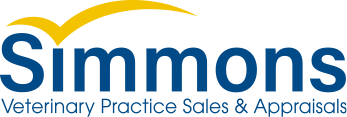Practice owners focus so much on the daily challenges of patient care, client service, and staff management that they overlook factors affecting profitability and practice value. In this session, the authors discuss the most important factors that drive down value. Some may involve circumstances beyond your control, while others are manageable if properly addressed. We encourage you to use this discussion to assess your practice circumstances and make positive changes to enhance profitability and increase practice value.
Fail to Offset Cost Increases With Gross Revenue Increases
Most practices see business cost increases each year. Wage pressure from doctors and support staff, rising drug and supply costs, and regular inflationary increases in other costs contribute to steady practice profitability erosion. Practice profit is a major determinant of practice value, and value decreases if cost increases are not offset by revenue growth.
Without growth in gross revenues, it is challenging to maintain the practice’s value. Revenue growth comes primarily from fee increases, more frequent client visits, or providing additional services to the existing client base. The typical practice has all 3 of these factors moving one way or the other at various times.
Raise Fees
Practice owners can have the most predictable impact on revenues by raising fees. The key question to ask is, “How much do I need to raise fees to raise gross revenues by a certain amount?” Practices should try to increase revenues due to fee increases by at least 3% per year. Note that raising some fees by 3% will not result in a 3% increase in revenue unless every treatment and inventory code in the hospital‘s practice management system is increased by 3%. This is unlikely to happen due to competitively priced items. Fees should be raised on those frequently utilized treatments or inventory items, or the increase’s impact will be less than expected.
Example
Let‘s look at a real hospital. Dr. Smith has 800 codes in his computer practice management system. Of those, 360 are treatment codes, and 440 are inventory codes. Last year, the practice‘s gross revenues were $1,800,000, of which $1,300,000 came from treatments given, and $500,000 came from inventory sales. His practice management system can report the gross revenue from the top 50 treatment items, excluding inventory. That report shows him that 80% of his treatment revenues ($1,040,000) come from the top 50 treatments provided in his practice. If Dr. Smith raised fees by 5% on all 50 of his top treatment items, that would result in a revenue increase due to fee increases of $52,000 ($1,040,000 X 5% = $52,000). The additional $52,000 only represents a 2.9% gross revenue increase due to rising prices on all 50 of the practice‘s top 50 treatments ($52,000 divided by $1,800,000). If Dr. Smith‘s hospital operation costs went up by the same percentage, he would have broken even in the given period.
Of course, most practices are unwilling to raise fees on the top 50 treatment items because some of those items, such as office visits, vaccinations, and elective surgery, are competitively priced. Looking at Dr. Smith‘s practice more closely, we find that 5 of his top 50 treatment codes are for various office visits, 11 are for vaccinations, and 4 are for elective surgeries. They represent $183,000, $202,000 and $43,000 of revenue, respectively. Suppose Dr. Smith excludes these competitively priced items from any fee increase and raises the remaining items in his top 50 treatments by 5%. In that case, the result is additional gross revenue from fee increases of $20,000. This amount equals a revenue increase due to a price increase of only 1.1% ($20,000 divided by $1,800,000). Adjusted net earnings and practice value are both reduced because the cost of doing business grew faster than gross revenues.
It is important to use price increases to maintain practice value and appreciate that sometimes one must be aggressive if business costs increase rapidly.
Increase Client Base
Another way to increase gross revenue is to see more clients. We are told that by hiring additional support staff that we can free up a veterinarian. If that happens and there is client demand, then the veterinarian should provide professional services to more clients. Let‘s say that we hire one additional support staff person and pay them $26,000 per year. The intent is to increase revenue by leveraging off of the new staff member. Let‘s assume that the average charge per transaction in Dr. Smith‘s practice is $100. If he saw 520 clients in a year that he would not have seen without the one new staff member, the practice would see an increase in gross revenues of $52,000. To see 520 clients in a year, the doctor would need to see 11 clients per week that would not usually have been seen. This scenario assumes he worked 4 days per week for 47 weeks a year. The $52,000 per year will benefit the practice, but what is the impact of adding the new staff member and paying that person $26,000? Is the $52,000 all profit, is only half profit, or is none additional profit?
Generating Additional Gross Revenue
To answer the question, one must understand the concepts around the cost structure in a typical practice. All practices have fixed and variable costs. Fixed costs are support staff (approximately 25% of revenue) and facility costs (approximately 10% of revenue) for a total of 35%. Variable costs are the cost of drugs and supplies (approximately 20% of revenue), doctor‘s compensation (approximately 25% of revenue), and miscellaneous costs (approximately 5% of revenue) for a total variable cost of 50%. Another way to say this is that for every $100 increase in gross revenue, $50 (50%) of that additional revenue goes to pay for the variable practice costs.
In our example above, we added one additional support staff member, which allowed the veterinarian to see 520 cases that he would not have seen had the new staff member not been present. This generated $52,000 of additional gross revenue, of which $26,000 went to pay for the new support staff person. In Dr. Smith‘s practice, 50% of the costs vary with the revenue, so $26,000 went to the cost of supplies, doctor compensation, and other miscellaneous costs. In this example, hiring the new support staff person and allowing the veterinarian to see more cases and generate an additional $52,000 of gross revenue was a breakeven event ($26,000 to pay the support person + $26,000 of variable costs equals the $52,000 of additional revenue). Point of Clarification: We use this example to make a point. When you add support staff, you must increase revenues beyond their compensation to break even. This is because of the variable costs in most practices. In fact, less than 50% of the costs would be variable because the $52,000 of additional revenue is incremental to whatever revenue base is already there. Thus the breakeven point would be something below the $52,000 of additional revenue.
Fail to Understand Change Impact in the Practice’s Revenue Mix
A practice’s revenue mix is the sum of all the items for which clients are charged a fee. The revenue mix in a practice with 30% of its revenue coming from flea and heartworm product sales is different than one in which these products represent only 10% of the revenue. We know that the profit margin is different on each treatment or inventory item a client buys. For example, the profit margin on a cystotomy is higher than a Heartgard package sale. Over the past 10-20 years, the profession has seen a shift in the revenue mix from more profitable treatments to less profitable medications such as flea, heartworm, and dietary products. As the mix shifts more toward products, overall profits and practice value go down. The best way to maximize practice value is to shift the revenue mix towards professional services as much as possible and be less dependent on product sales.
Fail to Recognize and Correct Factors That Increase Practice Purchase Risk
As the risk to a buyer goes up, practice value goes down.
The primary factors that should be considered in risk assessment include the following.
- Adjusted net earnings and gross revenue growth rates. If they are going down, the risk goes up because they are some dynamic at play eroding profits.
- Goodwill transferability to a new owner. Niche or “personality” practices are dependant on the seller, and the risk to a new buyer is more significant than it would be in a practice with multiple providers offering various treatments and products.
- Location. The neighborhood is essential, as is practice visibility and access.
- Staff quality. A well-trained happy, motivated staff is better than one that is not and is a lower risk to a new owner.
- Revenue mix. Practices providing mainly in-demand professional services likely to remain in-demand are at lower risk than those with more ancillary item sales and services provided by someone other than a veterinarian.
- Facility quality. There is no question that a nice, clean, modern facility is a lower risk to a buyer than an old, run-down hospital.
- Demographics. Population trends, employment, income levels, and education are just a few demographics that should be positive in a low-risk practice.
- Practice stability. A low-risk practice should have consistent year-over-year revenue growth, low staff turnover, remain in the same location for a significant time, and weather several business cycles.
- Competition. If there are many practices in a small area that clients can choose from, the practice has more risk than one with less competition.
- Lease terms. A favorable lease reduces the buyer’s risk.
- Effective management systems. A low-risk practice has systems allowing the manager easy access to the information needed to monitor the practice’s health.
- Non-competition agreements with associate veterinarians. The absence of non-competition agreements greatly increases the buyer’s risk because an associate veterinarian can leave the practice to compete nearby.
- Effective management systems include computerized business, patient, and client management systems.
- Marketability risks: 1) Predominantly small animal practices with a significant mix of food animal, equine or avian components may be more challenging to sell, as the number of buyers interested in these variations on the small animal theme is quite small. These practices are most often successful in ownership transition by selling to associates and not on the open market. 2) Practices that provide non-traditional services such as holistic, chiropractic, or acupuncture face the same dilemma. While they may be very successful businesses as currently operated, the buyers’ market is quite small, and an open market sale may be difficult.
Simmons Can Help You Increase Your Practice Value
The authors trust that the listing and discussing of factors that drive down practice values (and currently operating profitability) has been useful in sensitizing practice owners to these sometimes subtle but very real threats. We suggest you use this presentation as a checklist in assessing your practice circumstances. While some may seem to be beyond your control, many can be addressed and corrected. The reward is increased annual profitability and increased practice value. We suggest you formalize this review process and conduct it on an annual basis. Contact us to connect to a Simmons Veterinary Practice Sales and Appraisals advisor who can help you evaluate and increase your practice value today.
Stanley R. Creighton, DVM, Diplomate, ACVIM, Internal Medicine, CEO, National Veterinary Associates, Inc. and Dick Goebel, DVM, President, Simmons Great Lakes
This article was originally posted on www.simmonsinc.com. Any reproduction on any other site is prohibited and a violation of copyright laws.



